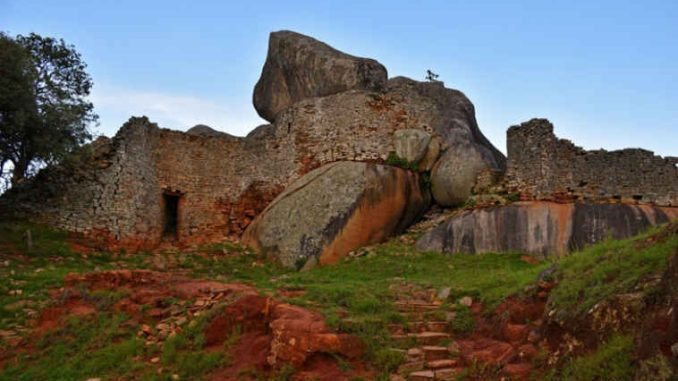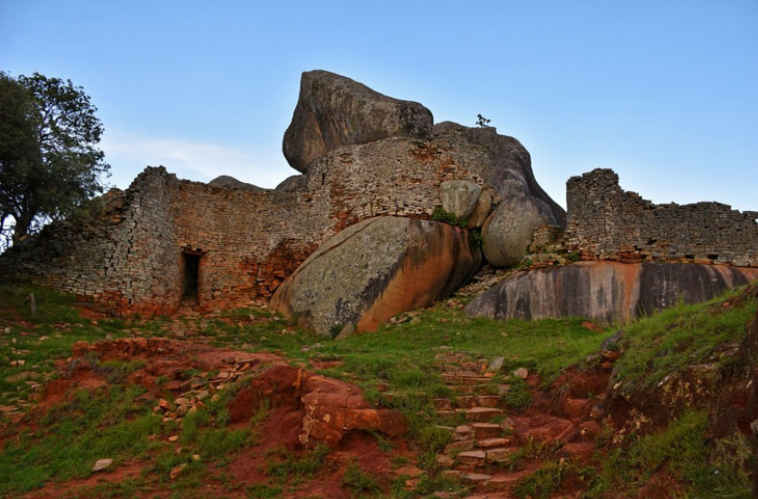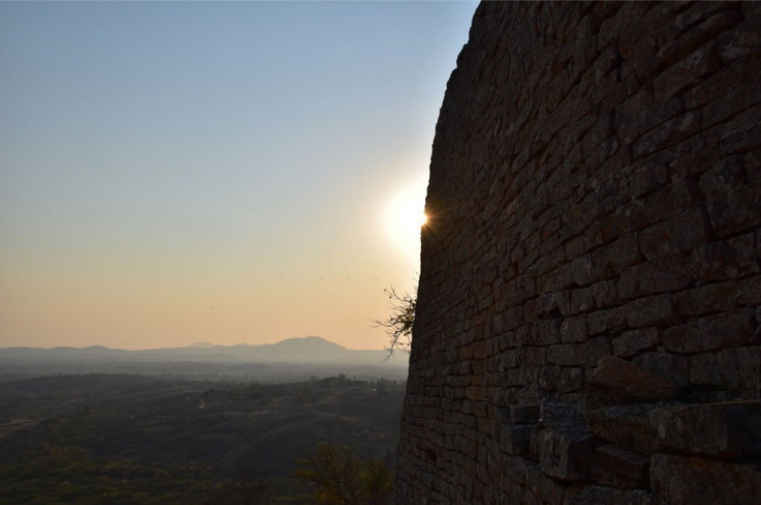
The Great Zimbabwe Ruins is one of the most impressive archaeological sites in Africa, and a testament to the region’s ancient civilization. Located in southeastern Zimbabwe, this UNESCO World Heritage site is a fascinating destination for anyone interested in history, culture, and architecture.

The ruins consist of towering stone walls, intricate passageways, and remarkable artifacts that offer a glimpse into the country’s mysterious past. This article takes you on a journey through the Great Zimbabwe Ruins, exploring the history, significance, and cultural legacy of this magnificent site. Join us as we uncover the secrets of Zimbabwe’s ancient civilization.
Introduction to the Great Zimbabwe Ruins: A Glimpse into the Mysterious Past
The Great Zimbabwe Ruins is one of Africa’s most significant cultural sites, attracting tourists, archaeologists, and history enthusiasts from around the world. These ruins, located in southeastern Zimbabwe, were built between the 11th and 15th centuries by a sophisticated and powerful civilization that dominated the region.
The Great Zimbabwe Ruins, which are designated as a UNESCO World Heritage site, are a testament to the architectural and engineering skills of the people who built them. The ruins are made up of stone structures, walls, and enclosures that were constructed without the use of mortar or cement.
The Great Zimbabwe civilization was a highly organized and centralized society that thrived on trade, mining, and agriculture. They were known for their impressive feats of engineering, including terraced fields, dams, and water channels.
The history of the Great Zimbabwe civilization remains shrouded in mystery, with many unanswered questions about their origins, culture, and decline. There are several theories about the origins of the Great Zimbabwe people, including suggestions that they were descended from ancient civilizations in Egypt or Arabia.
However, most scholars believe that the Great Zimbabwe civilization was a product of the Bantu expansion, which began around 1000 CE.
Exploring the Great Zimbabwe Ruins: A Journey through Time
A visit to the Great Zimbabwe Ruins is like taking a journey back in time. The ruins are divided into three main areas: the Hill Complex, the Valley Complex, and the Great Enclosure. Each area has its unique features and architecture, providing a fascinating glimpse into the daily life and activities of the people who lived there.
The Hill Complex is the oldest part of the Great Zimbabwe Ruins, dating back to the 11th century. It is perched on a granite hill and contains several stone walls and enclosures. The Hill Complex is believed to have been the spiritual and political center of the Great Zimbabwe civilization, and it was where the elite lived and worked.
The Valley Complex is located at the foot of the Hill Complex and contains several clusters of stone walls and enclosures. This area was the hub of economic activity in the Great Zimbabwe civilization, with evidence of mining, agriculture, and trade. Visitors can see the remains of terraced fields, water channels, and stone enclosures used for storing grain and livestock.
The Great Enclosure is the most impressive and iconic part of the Great Zimbabwe Ruins. It is a massive stone structure, measuring 250 feet in diameter, and is believed to have been a royal palace or temple.
The walls of the Great Enclosure are over 30 feet high and made of granite blocks, weighing up to 16 tons each. The construction of this incredible structure is a testament to the architectural and engineering prowess of the Great Zimbabwe people.
Uncovering the Secrets of the Great Zimbabwe Ruins: Archaeological Discoveries and Research
Archaeologists have been studying the Great Zimbabwe Ruins for over a century, uncovering fascinating discoveries and shedding new light on the history and culture of the Great Zimbabwe civilization. The ruins are a rich source of archaeological data, providing insights into everything from daily life and religion to politics and trade.
One of the most significant discoveries at the Great Zimbabwe Ruins was made in the early 20th century by British archaeologist David Randall-MacIver. He excavated the Great Enclosure and uncovered several artifacts, including pottery, iron tools, and gold objects. These finds provided evidence of the Great Zimbabwe people’s wealth and sophistication.
More recent archaeological research has focused on using modern techniques such as 3D modeling, digital mapping, and DNA analysis to understand the Great Zimbabwe civilization better. For example, researchers have used ground-penetrating radar to map the underground structures and features of the ruins, revealing previously unknown details about the layout and organization of the site.
One of the most intriguing discoveries in recent years is the evidence of long-distance trade and cultural exchange between the Great Zimbabwe civilization and other parts of the world. Archaeologists have found artifacts and materials from as far away as China, Persia, and the Middle East, indicating that the Great Zimbabwe people had extensive trade networks and were connected to the wider world.

Despite the many exciting discoveries made at the Great Zimbabwe Ruins, there are also controversies and challenges surrounding archaeological research at the site. One of the most significant challenges is the preservation of the ruins, which are under threat from erosion, weathering, and human activities such as tourism and development. Archaeologists and conservationists are working to protect the ruins and promote sustainable tourism practices that balance preservation with access and education.
Visiting the Great Zimbabwe Ruins: Practical Information and Tips for Travelers
The Great Zimbabwe Ruins are a UNESCO World Heritage site located in southern Africa, and they are one of the most impressive historical and archaeological sites on the continent. This incredible site is a must-see for anyone interested in ancient civilizations, African history, or simply in awe of the marvels of human engineering.
Here, we provide practical information and tips for travelers planning to visit the Great Zimbabwe Ruins.
Practical Advice for Planning Your Trip
The first thing to consider when planning a trip to the Great Zimbabwe Ruins is the best way to get there. The site is located in southeastern Zimbabwe, about 20km southeast of the modern-day city of Masvingo.
The nearest airport is in Harare, which is about 300km away. Visitors can reach the site by car or bus from Harare or any other major city in Zimbabwe.
Once you arrive at the site, there are several accommodation options available, including hotels, guest houses, and campsites. Visitors can also choose to stay in the nearby city of Masvingo, which offers a wider range of accommodation options.
Entry fees to the Great Zimbabwe Ruins vary depending on your nationality and the type of ticket you purchase. It is important to check the current entry fees before planning your trip, as prices may change over time. In general, visitors should expect to pay between $10 and $20 per person for entry.
Tips for Getting the Most Out of Your Visit
There are several activities and tours available at the Great Zimbabwe Ruins that can enhance your visit. For example, visitors can take guided tours of the site, which provide a wealth of information about the history and significance of the ruins. Visitors can also explore the surrounding area on foot, with hiking trails that offer stunning views of the landscape.
One of the most important things to keep in mind when visiting the Great Zimbabwe Ruins is to respect the site and its history. This means not touching or removing any artifacts or structures, and being mindful of the impact of your visit on the environment and local communities. Visitors should also be aware of the importance of preserving the site for future generations, and take steps to minimize their impact on the site.
Ethical and Responsible Tourism Practices
As with any tourism destination, visitors to the Great Zimbabwe Ruins should be mindful of the impact of their visit on the environment and local communities. This means taking steps to minimize your impact on the environment, such as reducing your use of plastic and other non-biodegradable materials. Visitors should also be respectful of local customs and traditions, and seek to learn more about the local culture and history.
Another important aspect of ethical and responsible tourism is supporting local communities. Visitors can do this by purchasing locally made products and services, and by supporting local businesses and organizations. This helps to ensure that the benefits of tourism are spread throughout the community, and that local people are able to benefit from the economic opportunities that tourism can provide.
Conclusion
Visiting the Great Zimbabwe Ruins is an incredible experience that offers a glimpse into the rich history and culture of southern Africa. By following these practical tips and ethical tourism practices, visitors can ensure that their visit is both enjoyable and responsible.
Whether you are a history buff, an avid traveler, or simply looking for a unique and inspiring destination, the Great Zimbabwe Ruins should definitely be on your list of must-visit places.